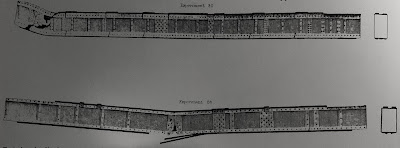An empirical masterpiece
When I studied engineering at university one of the structures that was frequently put forward by Professors, as an excellent example of structural design was Britannia Bridge. Throughout my time at university and probably for a time afterwards I didn’t really understand why. It didn’t seem a particularly great design to me. I don’t suppose for one moment that was my Professors’ fault; I had good teachers. I suspect it was more likely that I wasn’t paying sufficient attention.
Notwithstanding all of this, Britannia Bridge was, in my humble opinion, ugly. My architect friends might well quip that this is exactly what to expect from a bridge designed by an engineer. I beg to differ, but that debate is for another day.
Having got that historical baggage off my chest I am now, as you might have guessed, wholly convinced of Britannia’s brilliance and it’s aesthetic has sort of grown on me. I’m not saying it has become easy on the eye; rather an appreciation of how it works and how it came to be has resulted in a greater appreciation of its aesthetic.
So why did I change my view of Britannia’s structural design and what was it that persuaded me? Much like students today, my younger self lacked an appreciation of context and when judging the achievements of the past context is everything.
Thomas Telford, the first president of the Institution of Civil Engineers, completed the Menai Strait suspension bridge in 1826. At that time it held the record for the longest suspended span in the world and it is an elegant and beautiful bridge. That said Telford’s masterpiece [perhaps the subject of a future post] was not without problems. It suffered aerodynamically and was damaged on several occasions before being stiffened.
When Robert Stephenson was faced with the problem of bridging the Menai Strait for the Chester & Holyhead railway a suspension bridge, like Telford’s, was not considered stiff enough to carry the weight of steam locomotives [the suspension form was still in its infancy].
The obvious answer would have been to construct intermediate piers from which arch centerings could be erected, however the currents in the strait were considered to be treacherous and therefore the Admiralty insisted that there be no obstructions placed in the channel, which would make it more difficult to navigate. The only place an intermediate support could be found was at Britannia rock, which was located almost halfway between either shore.
An alternative idea was to construct an arch on centring built from floating pontoons, however this was also ruled out as there would have been insufficient clearance for ships near the abutments at high tide.
Since a suspension bridge was deemed too flexible and the Admiralty’s intervention had ruled out an arch, Stephenson had to invent something altogether new.
To achieve the required strength and stiffness Stephenson had some notion that the answer would involve creating large wrought iron plate girders by riveting. He later settled on the idea of a wrought iron tube through which the trains would pass. He had originally thought of the tube as being suspended from chains, but decided instead that it should behave as a hollow beam spanning from end to end.
Stephenson turned to William Fairbairn, who was known for his investigation of iron and his experience of ship hulls, which seemed analogous to his hollow tube idea. He engaged Fairbairn to investigate a hollow tube design by conducting experiments on scale models.
Fairbairn realised however, that extrapolating behaviour observed in models to full scale was not straightforward. He therefore recommended Eaton Hodgkinson to Stephenson for the purpose of deriving empirical relationships from his models that could be used to size the bridge. We have of course met this pair before in a prior blog post ‘On Fish-bellies’.
And so it was that three great pioneers Stephenson, Fairbairn and Hodgkinson set about designing Britannia bridge.
Amongst their findings the trio discovered the mechanism of plate buckling, which overturned the idea that wrought iron was weaker in compression than tension. They also discovered that rivets work by clamping and friction, when previously it was assumed their behaviour was governed by dowel action. They looked at the effects of continuity over an intermediate structural support, which enabled a more efficient design to be realised. They also explored thermal movements and wind effects. Their collaboration was a remarkable piece of work.
The resulting bridge was a mixed success. It performed as intended, however it was exceedingly expensive, owing to the cost of iron in the mid nineteenth century. This is probably the main reason its form was not adopted more widely. Nevertheless, Stephenson’s design methodology was exceedingly influential, as were the empirical insights gleaned from Fairbairn’s models.
In this sense Britannia Bridge is archetypal of the empirical approach to design that was practised by British Engineers at that time.
Ironically the fire, which caused its eventual demise in 1970 was caused by ignition of the wooden roof covering that was later added to protect the bridge from corrosion. It wasn’t even part of the original bridge, so my younger self got that completely wrong too!
[1] In a very pure sense this isn’t strictly true, because modern bridges do make use of box girders, but not in the same way as Britannia.







No comments:
Post a Comment